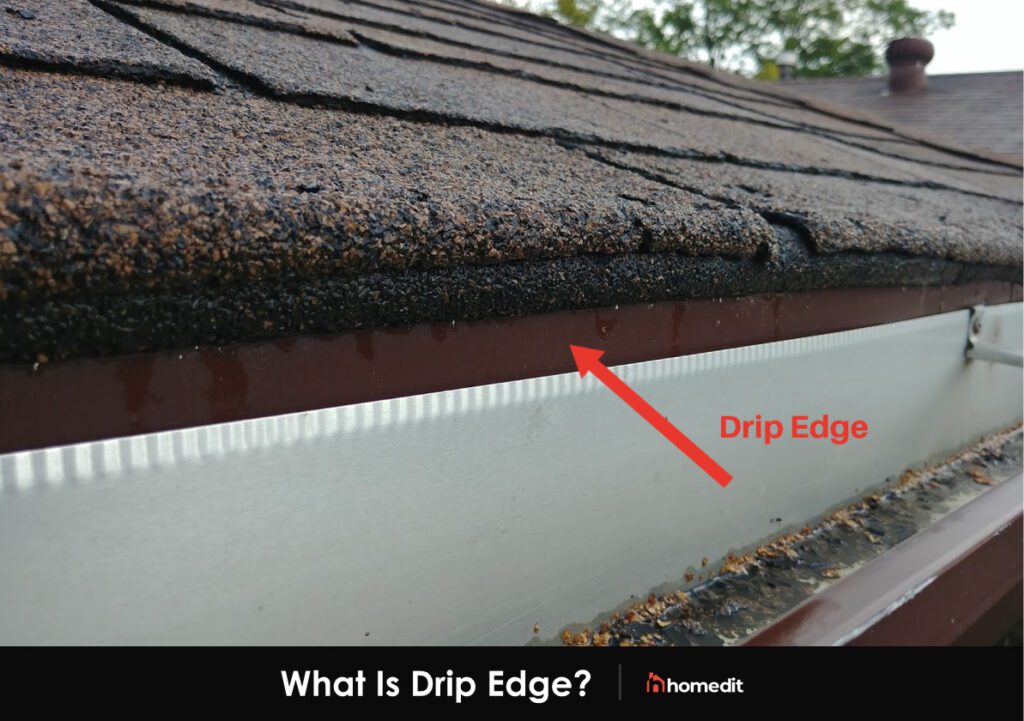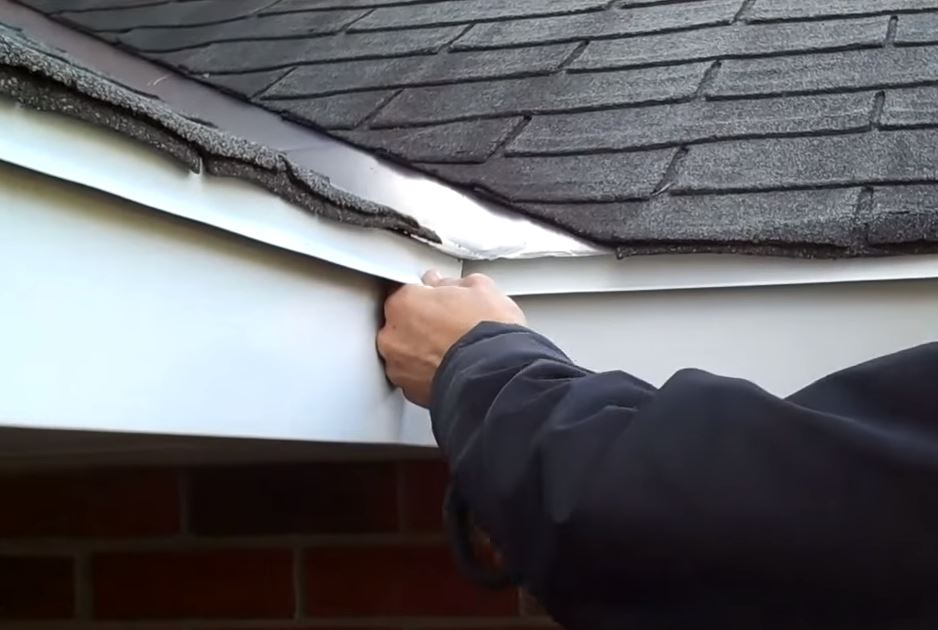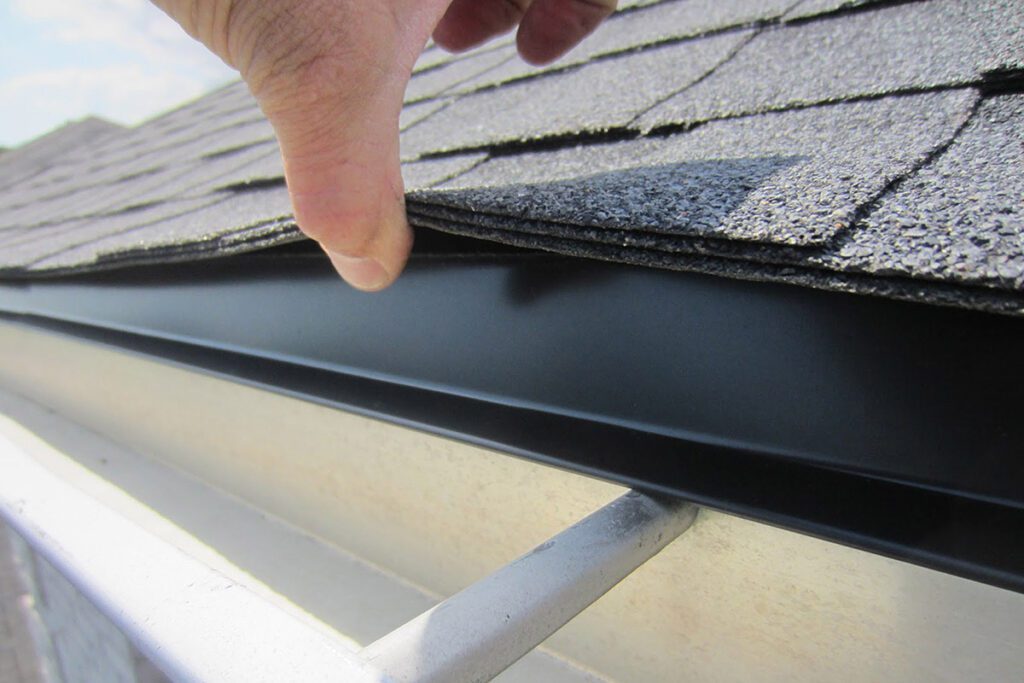When it comes to roofing, one essential component that often sparks discussion is drip edge flashing. So, is it always necessary? In this article, we’ll explore the importance of drip edge flashing for roofs, its functionalities, and the potential consequences of neglecting this crucial element. By the end, you’ll have a clearer understanding of whether or not drip edge flashing is truly indispensable for your roof.

What is Drip Edge Flashing?
Definition
Drip edge flashing is a narrow strip of material, typically made of metal, that is installed along the edges of a roof. It is typically L-shaped, with one side extending over the roof’s edge and the other side extending down along the fascia or soffit.
Purpose
The main purpose of drip edge flashing is to direct water away from vulnerable areas of the roof, such as the fascia and soffit. It helps control water runoff, prevents water intrusion, and increases the longevity of the roof.
Types of Drip Edge Flashing
There are several different types of drip edge flashing available, each with its own unique design and application. Some common types include:
-
L-shaped Drip Edge: This is the most common type of drip edge flashing, and it is installed along the edges of the roof where the eaves meet the fascia. It helps protect the fascia and soffit from water damage.
-
T-shaped Drip Edge: This type of drip edge flashing is used on roofs with overhangs. It is installed under the shingles near the roof’s edge and helps to redirect water away from the fascia and into the gutters.
-
D-metal Drip Edge: This type of drip edge flashing is shaped like the letter D and is typically used on roofs with tile or slate. It is installed under the first row of tiles or slates and helps prevent water from getting under the roofing material.
-
PVC Drip Edge: This is a newer type of drip edge flashing made from PVC. It is lightweight, durable, and resistant to corrosion. PVC drip edge flashing is often used in coastal areas where saltwater corrosion can be a concern.
Importance of Drip Edge Flashing
Protects Fascia and Soffit
One of the major reasons why drip edge flashing is important is because it helps protect the fascia and soffit from water damage. Without proper drip edge flashing, water can seep behind the gutter and cause rotting or decay of the fascia boards. This can lead to expensive repairs and potential structural issues.
Controls Water Runoff
Drip edge flashing plays a crucial role in controlling water runoff from the roof. By directing the flow of water away from the edges and into the gutters, it helps prevent water from pooling or infiltrating into the foundation of the building. Proper water runoff management is essential for maintaining the overall integrity of the structure.
Prevents Water Intrusion
Water intrusion is a common problem in roofs that do not have drip edge flashing. When water enters through gaps or cracks at the roof edges, it can cause significant damage to the roof deck, insulation, and interior of the building. Drip edge flashing acts as a barrier, preventing water from infiltrating into the roof system and causing potential leaks.
Increases Roof Longevity
By protecting the roof from water damage and preventing water intrusion, drip edge flashing helps increase the longevity of the roof. It minimizes the risk of rotting, decay, and other structural issues that can shorten the lifespan of the roof. Investing in quality drip edge flashing can potentially save homeowners from costly repairs or premature roof replacement.

Building Codes and Regulations
Local Building Codes
The installation of drip edge flashing is often governed by local building codes. These codes vary from region to region, and it is important to consult the specific requirements in your area. Local building codes may specify the minimum size, material, and installation methods for drip edge flashing.
International Building Codes (IBC)
The International Building Codes (IBC) are a set of standards and regulations for building construction that are widely adopted in many countries. The IBC provides guidelines for various aspects of construction, including roofing. It may include specific requirements for drip edge flashing, such as the minimum size and material specifications.
National Roofing Codes
In addition to local building codes and the IBC, there are also national roofing codes that address specific requirements for roofing systems. These codes are often established by industry organizations and associations, such as the National Roofing Contractors Association (NRCA) in the United States. These codes may provide guidance on the installation, material, and design of drip edge flashing.
Climate Considerations
Hot and Dry Climates
In hot and dry climates, drip edge flashing helps protect the roof from the intense heat and sunlight. It can prevent the edges of the roof from cracking or deteriorating due to prolonged exposure to high temperatures. Additionally, it helps redirect any sudden or heavy downpours away from vulnerable areas, preventing water damage during occasional rain events.
Cold and Snowy Climates
In cold and snowy climates, drip edge flashing plays a crucial role in preventing ice dams. Ice dams occur when snow on the roof melts and refreezes at the colder edges, leading to the formation of ice buildup. Drip edge flashing helps redirect water away from the roof edges, preventing the formation of ice dams and the potential damage they can cause.
High Wind Areas
In areas prone to high winds, drip edge flashing helps secure the roof’s edges and prevent wind-driven rain from entering the roof system. By providing a barrier against wind penetration, it helps protect the roof from water damage and potential structural issues caused by strong wind gusts.

Roof Types and Designs
Flat Roofs
Drip edge flashing is essential for flat roofs as they tend to have minimal slope to promote water drainage. Without proper drip edge flashing, water can accumulate at the edges and increase the risk of leaks or structural damage. The installation of drip edge flashing helps facilitate proper water runoff and ensures the longevity of flat roofs.
Pitched Roofs
Pitched roofs, also known as sloped roofs, also require drip edge flashing to protect the edges of the roof. The installation of drip edge flashing along the eaves helps prevent water from getting underneath the roofing material and causing potential leaks or water damage. It also plays a role in directing water into the gutters, preventing overflow and further protecting the roof.
Curved or Domed Roofs
Curved or domed roofs present unique challenges when it comes to drip edge flashing. In these cases, custom-made drip edge flashing may be required to fit the unique shape of the roof. The installation of properly designed and installed drip edge flashing is crucial to ensure effective water management and protection for these specialized roof types.
Roofing Materials
Asphalt Shingles
Asphalt shingles are one of the most common roofing materials used today. Drip edge flashing is particularly important when installing asphalt shingles, as it helps protect the vulnerable edges from water damage. It also provides a clean, finished look to the roofline and enhances the overall aesthetic appeal of the roof.
Metal Roofing
Metal roofing is durable and long-lasting, but it is also vulnerable to water intrusion if not properly protected. Drip edge flashing is essential when installing metal roofing, as it prevents water from seeping underneath the metal panels and causing potential leaks or rusting. It is particularly important in areas prone to high winds or heavy rainfall.
Tile Roofing
Tile roofing is known for its beauty and durability, but it can be susceptible to water damage if not properly maintained. Drip edge flashing is critical for tile roofs, as it helps direct water away from the edges and prevents water from penetrating beneath the tiles. It also helps protect the underlying roof components from moisture damage.
Slate Roofing
Slate roofing is highly resistant to water, but proper installation and maintenance are crucial for its longevity. Drip edge flashing is important for slate roofs, as it helps protect the edges from water infiltration and prevents any potential issues caused by water runoff. It also contributes to maintaining the overall structural integrity of the roof.
Wood Shingles
Wood shingles provide a natural and aesthetically pleasing roof option, but they require special attention to prevent water damage. Drip edge flashing is vital for wood shingles, as it helps direct water away from the edges and prevents any potential rot or decay. It plays a crucial role in ensuring the longevity of the wood shingle roof.

Alternative Flashing Methods
Drip Edge Alternatives
While drip edge flashing is the most common method of protecting the roof edges, there are alternative flashing methods available. These alternatives include using ice and water shields or self-adhering membranes designed to protect vulnerable areas of the roof from water intrusion. However, it is important to consult with a roofing professional to determine the best solution for your specific roofing needs.
Step Flashing
Step flashing is a type of flashing that is installed in a “step-like” pattern along the roof’s vertical surfaces, such as chimneys or walls. It helps create a watertight barrier by overlapping individual pieces of flashing as they extend up the roof plane. Step flashing is commonly used in conjunction with drip edge flashing to provide enhanced protection against water intrusion.
Counter Flashing
Counter flashing is typically installed along the vertical surfaces of chimneys or walls to protect the base of these structures from water intrusion. It is designed to overlap the step flashing to create a watertight barrier. While counter flashing is not a direct alternative to drip edge flashing, it complements the overall flashing system and helps ensure proper water management.
Kickout Flashing
Kickout flashing is a specialized type of flashing that is installed at the bottom of a roof slope where it meets a vertical wall. It is designed to divert water away from the vertical surface and into the gutter system. Kickout flashing helps prevent water intrusion behind the siding, which can lead to rot, mold, and other moisture-related issues.
Chimney Flashing
Chimney flashing is specifically designed to protect the area where the chimney intersects with the roof. It is installed in layers and sealed to ensure a watertight barrier. While not a direct alternative to drip edge flashing, chimney flashing is an important component of the overall roof flashing system, providing additional protection against water intrusion.
Common Issues Without Drip Edge Flashing
Rotting Fascia Boards
Without proper drip edge flashing, water can seep behind the gutters and cause rotting or decay of the fascia boards. This can lead to structural issues and expensive repairs.
Water Damage to Soffit
Water infiltration can cause damage to the soffit, the underside of the eaves. This can result in rot, mold growth, and potential structural damage.
Gutter Overflow
Without drip edge flashing, water can overflow from the gutters, causing erosion of the soil around the foundation and potential water damage to the exterior walls.
Leaking Roof Deck
Water intrusion at the roof edges can lead to leaks in the roof deck, potentially causing damage to the interior of the building, including ceilings, walls, and insulation.
Ice Dams
In colder climates, the absence of drip edge flashing can contribute to the formation of ice dams along the roof’s edges. Ice dams can lead to water infiltration and subsequent damage to the roof system and interior of the building.

Installation and Maintenance
Proper Drip Edge Installation
Proper installation of drip edge flashing is crucial to ensure its effectiveness in protecting the roof. It should be installed along the eaves and rakes, with the overhanging side facing outwards. The flashing should extend over the fascia or soffit, directing water away from these areas. It is important to consult with a roofing professional to ensure correct installation.
Inspecting for Damage or Missing Flashing
Regular inspections of the roof should include checking for any damage or missing drip edge flashing. Any signs of rust, corrosion, or bent edges should be addressed promptly. In case of missing flashing, it is important to have it replaced as soon as possible to prevent potential water damage.
Replacing or Repairing Drip Edge Flashing
If the existing drip edge flashing is damaged beyond repair, it should be replaced by a qualified roofing professional. It is essential to choose high-quality materials and ensure proper installation to maintain the integrity of the roof and prevent future issues.
Conclusion
Drip edge flashing is an essential component of a well-designed and properly functioning roof. It protects the fascia and soffit, controls water runoff, prevents water intrusion, and increases the longevity of the roof. Understanding the importance of drip edge flashing and its role in different climate conditions, roof types, and materials can help homeowners make informed decisions when it comes to their roofing systems. Regular inspection, maintenance, and prompt repair or replacement of drip edge flashing are key to ensuring a watertight and durable roof that will stand the test of time.